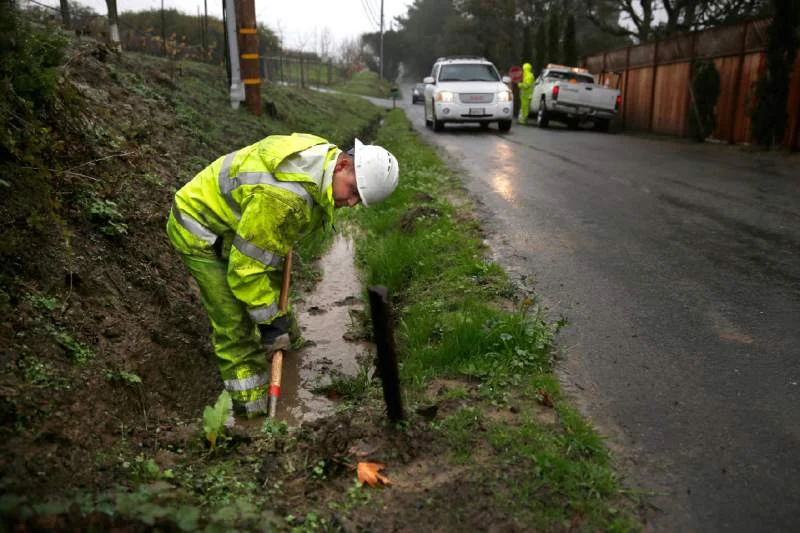The Marin County Department of Public Works has already spent months preparing the county for the upcoming winter seasons and the potential storms it may bring. They work closely with numerous other local agencies to ensure each of the critical aspects needed to mitigate flooding and drainage are inspected, repaired, and maintained.
While it is never possible to predict how much or little precipitation Marin County will get, the precautions taken help minimize flooding and ensure storm drains are clear.
Storm season preparations cover a wide range of work including inspecting and managing creeks, levees, pump stations and tide gates as well as roadway work, which includes roadside drainage ditches and street sweeping. Tasked with this responsibility, the Marin County Flood Control and Water Conservation District identifies and implements projects in eight designated flood control zones across Marin that are concentrated in the county’s eastern urbanized corridor. In total, the District oversees 38.71 miles of creeks and 8.18 miles of levees.
Each summer, the District inspects, maintains and repairs 43 pumps housed at 17 stations across Marin’s watersheds to ensure that they are functioning properly. The pumps are a crucial part in flood reduction for neighborhoods such as Tiburon’s Strawberry Circle and Bel Aire, lower Tam Valley, and for key roadways such as Highway 101 offramps at Rowland Boulevard in Novato.
Pump stations transport stormwater from low-lying lands into creeks, facilitating natural water flow out to San Francisco Bay. To that end, creek maintenance is a key aspect of storm preparations. The District works with local agencies, such as Conservation Corps North Bay and municipal public works departments, to handle maintenance on 18 creeks across the eight watershed zones. Teams perform extensive vegetation management including mowing of overgrowth and removal of dead foliage from creek banks. Excess sediment, dead trees and man-made debris are removed to maximize creek flow capacity.
Marin County residents can help by taking steps to prepare their property. Clearing dead leaves from gutters and storm drains are easy and very effective ways to avoid flooding. Dispose of dead foliage in compost bins; never leave leaves and garden debris in street gutters to clog drainage systems. If you live in an area which has encountered flooding in the past, stock up on sandbags in advance (you can find them at most hardware stores). Educate yourself now on how to use sandbags so you'll know what to do if water begins rising in your neighborhood and around your home.




